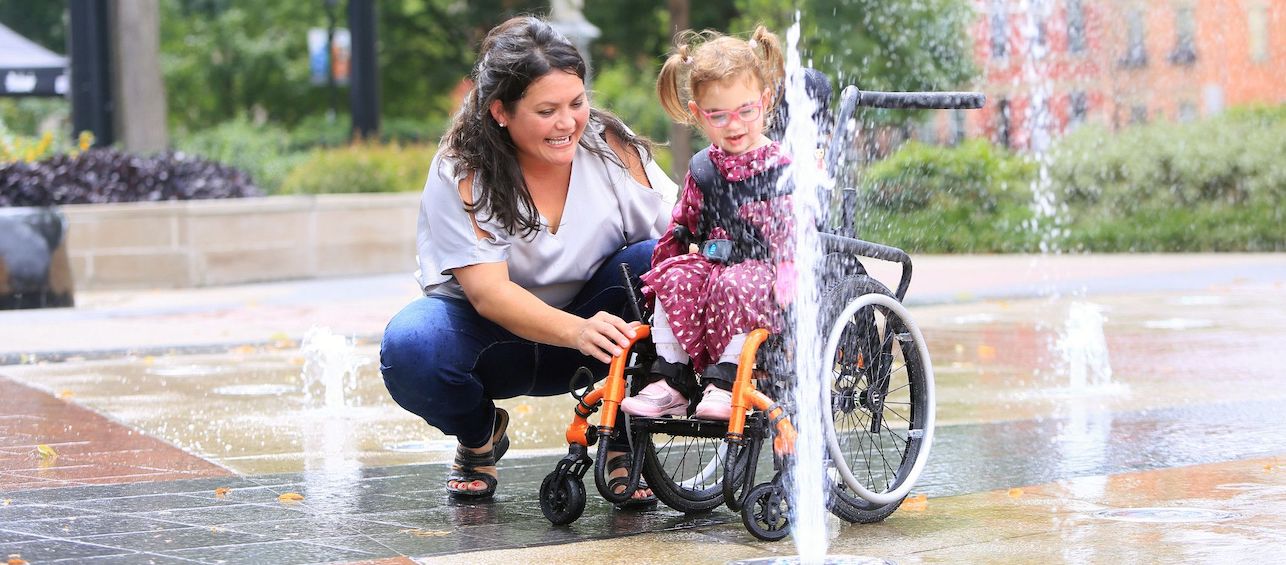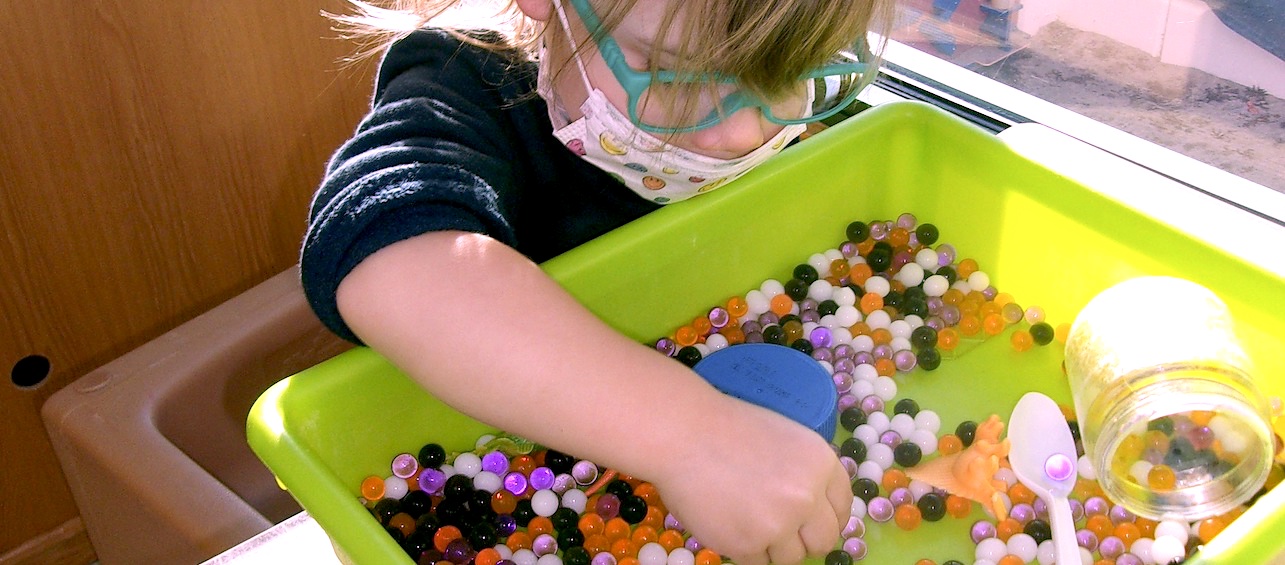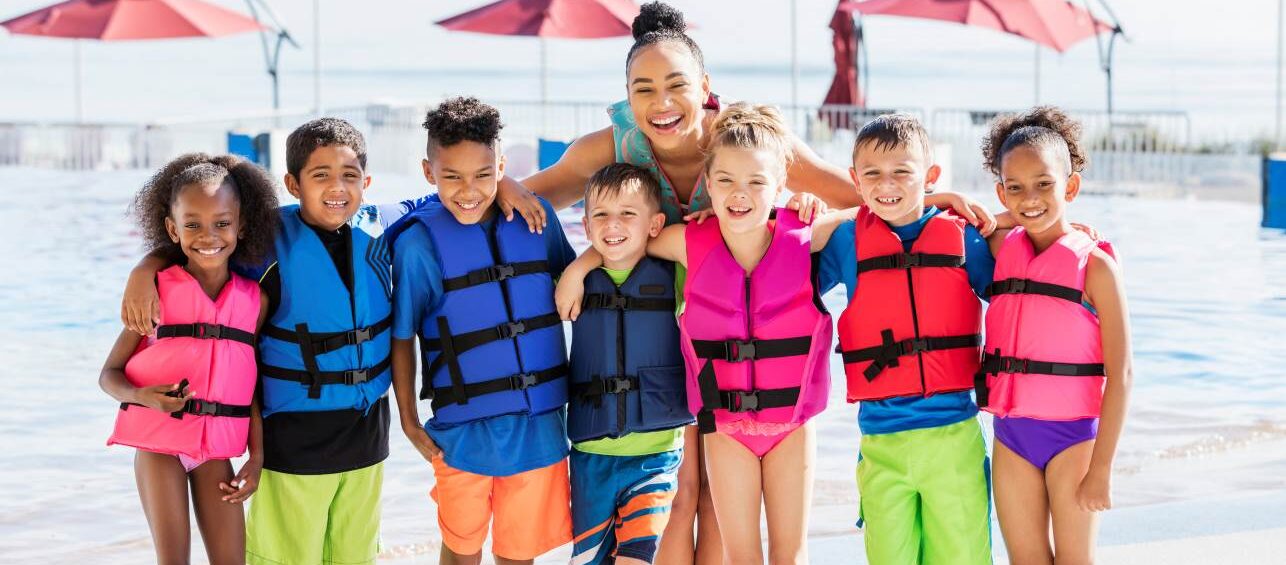Splash pads are a fun way to cool off on a hot day. They offer an easy alternative to swimming pools for families concerned about water safety. These unique spray parks have a variety of interactive water features that don’t allow standing water to collect, reducing the risk of drowning for young children.
Often referred to as the modern sprinkler, people also call them interactive fountains, spray pads, spray parks or wet decks. Whatever name you give them, splash pads are a great and often inexpensive way to keep kids entertained when school is out.
Splash Pad Safety Concerns
Splash pads have become a popular alternative to swimming pools. They allow visitors to engage in relatively carefree play with limited drowning concerns. But that doesn’t mean splash pads are without risks.
Potential splash pad risks include:
- Spread of Germs
Splash pads can spread germs and make users sick if the water is not adequately treated to prevent contamination. Since the water is constantly draining and immediately recirculated back through the spray jets and fountains, splash pads need to be properly disinfected.
It can be difficult for splash pads to maintain the correct amount of chlorine to kill bacteria, especially in an environment frequented by children in diapers. Water quality can also change based on number of visitors and weather. Really hot days or rainy days can affect the disinfectant level, increasing the risk of bacteria being present in the water.
- Unintentional Injury
Playing on wet surfaces increases the risk of fall-related injuries, potentially leading to bumps, bruises, scrapes or cuts.
- Exposure to Sun
Splash pad fun is a great way for kids to be active and get a daily dose of vitamin D from the sun. But too much exposure to the sun’s ultraviolet rays (UV rays) can cause sunburn.
Best Practices for Splash Pad Safety
As with any activity involving water, safety must always be considered. Here are some safety measures to keep in mind that can help ensure your family’s time at a splash pad is safe and enjoyable. Talk with your kids about these guidelines before heading to a splash pad:
Rules for Parents
- Keep an eye on your kids.
Even if a lifeguard is present, your undivided attention is required any time your kids are in and around water. - Take kids on bathroom breaks and check diapers often.
Take kids on bathroom breaks every hour. If kids are not potty trained, be sure to check their swim diaper at least every hour. - Consider water shoes.
Water shoes can protect kids’ feet and provide them with grip on slippery or rough surfaces. Water shoes can also prevent a child’s feet from coming into contact with harmful bacteria. - Skip the splash pad if your kids are sick.
Keep kids home if they have been feeling sick, have a fever, have diarrhea or have been vomiting. - Learn CPR and basic water rescue skills.
Rules for Kids
- Don’t swallow the water.
Harmful germs in the water can cause recreational water illnesses (RWIs). The most common symptoms of RWIs include diarrhea, vomiting, stomach cramps and fever. RWIs can also cause skin, ear, eye or respiratory symptoms. - Don’t sit or stand on jet sprays.
Jets can rinse poop off bottoms, releasing germs into the water. - No running, rough-housing or jumping.
Encourage kids to avoid running on slippery splash pad surfaces. Not only will this help prevent fall injuries, but also collisions with other children. - Sun protection is a must.
Apply sunscreen 20 minutes prior to heading outside and again every two hours. Look for water-resistant brands with broad spectrum protection and an SPF of 30 or higher. Hats, sunglasses and other sun-protective gear are also helpful in preventing overexposure from the sun. - Stay hydrated.
Bring lots of water for you and your child to drink. It’s important to rehydrate often when you’re out in the hot sun.
Ready, Set, Splash!
Splash pads that are properly operated and regulated reduce the risk of unsafe water experiences. In Ohio, splash pads are regulated by the Ohio Department of Health and water pressure limits are set by “Makenna’s Law” to ensure they are safe and healthy environments for everyone.
Parents also play a role in keeping kids healthy and reducing splash pad injuries. Splash pad safety starts at home. Prepare your kids ahead of time by talking about splash pad DO’s and DON’Ts. Most injuries are preventable if you follow best practices to prevention. Remember the rules to make sure your family splashes safely.





